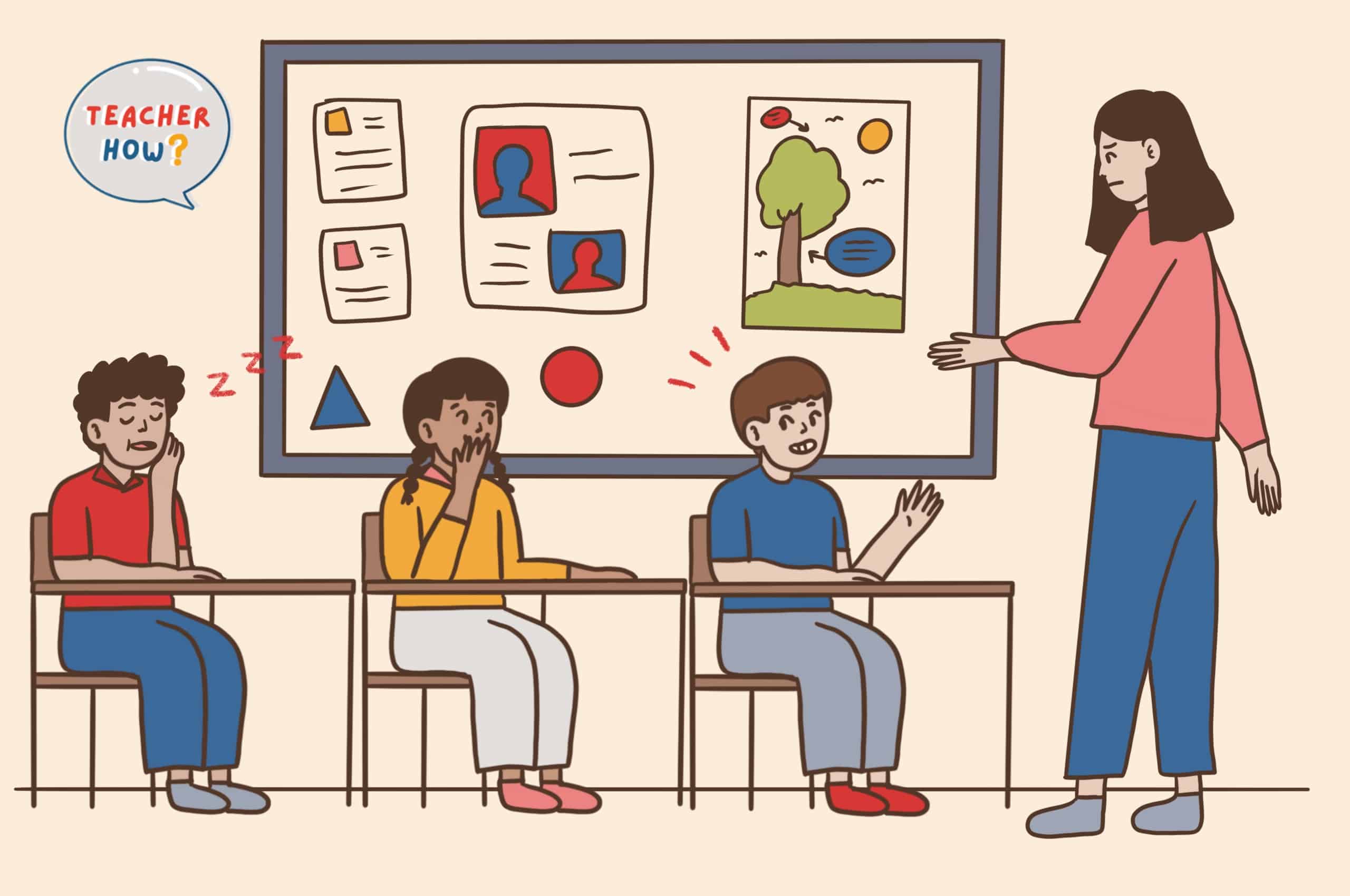Being a teacher is one of the most fulfilling jobs in the world: you’re creating fond memories with students, imparting valuable knowledge upon them, and helping them grow into outstanding individuals. However, the profession also requires a significant amount of patience, especially when up against a noisy and rowdy bunch.
Here’s how to quiet a class without yelling:
- Establish house rules.
- Go silent and wait.
- Speak softly.
- Clap or call out to them.
- Use noise-monitoring apps.
- Do a countdown.
- Have visual cues.
- Use a reward and consequence system.
- Get them moving.
- Play a sound or music.
- Listen and talk to your students.
- Play a brain break.
- Do a simple art activity.
- Turn the lights off.
- Ask questions to the noisy students.
These tips have been tested and approved by many educators and teachers worldwide. Students of all ages can be a challenge, but by putting in place some simple strategies, you’ll quickly learn how to get their attention and keep them quiet during class without ever having to raise your voice. Keep reading to learn how.
Establish House Rules
The best way to quiet down a class is to keep them from getting noisy and rowdy in the first place. This doesn’t sound easy, but establishing clear classroom or house rules can be highly effective in preventing the loud chaos from ever erupting.
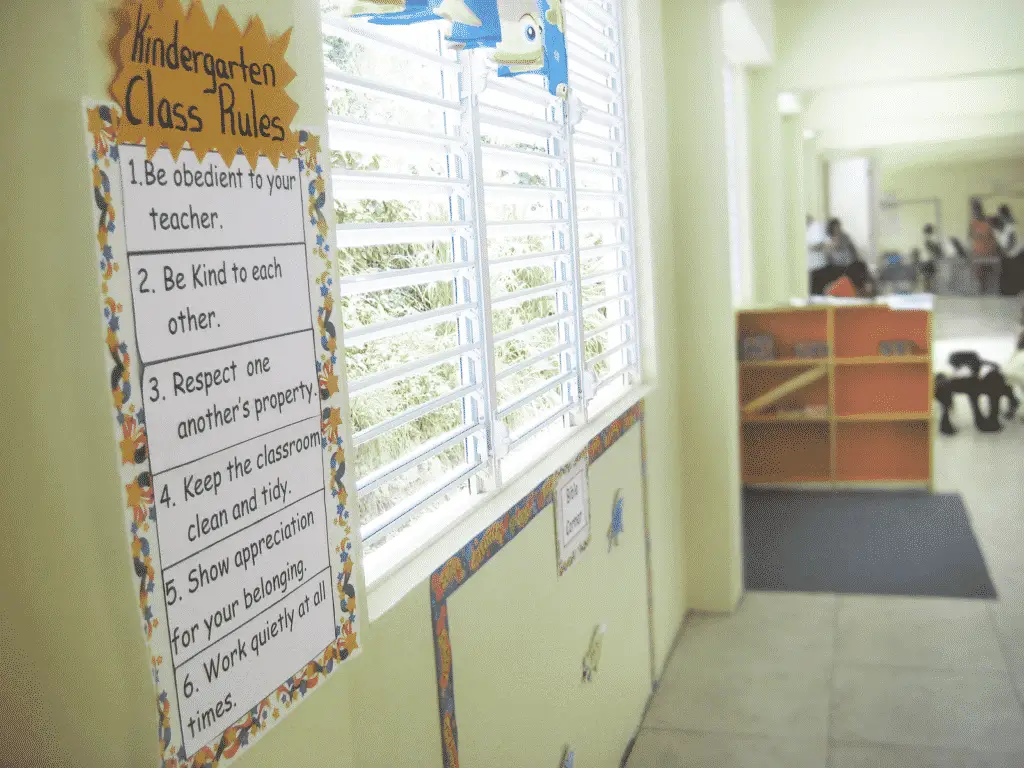
Rules make it clear to students what is expected of them during class and can ensure the classroom becomes a more pleasant and productive place.
Rather than the teacher dictating everything, have your students voice their thoughts on which rules should be set and followed within the classroom.
Here are a few fundamental rules you’ll want to be implementing:
- Listen to others who are speaking: This not only teaches them to respect others while they’re talking but also helps maintain order throughout the school year.
- Listen to instructions carefully: Besides having a “keep quiet while someone is speaking” rule, you can also establish a practice according to which you’ll only state instructions. This keeps you from repeating instructions often and lets your students learn that they should always focus and listen carefully because they might miss an important direction.
- No running in class: An obvious issue with children running in the classroom is that it could lead to injury. But running students can also cause plenty of commotion and disruption, resulting in the noise level increasing.
- No gadgets in class: Gadgets not only serve as a distraction, but they may also cause unnecessary noise. A phone going off in class can cause a great deal of distraction, which is why most schools are for a complete ban on mobile phones in school. Setting a gadget ban or at least limitations on their use (such as must be kept silent) might be in everyone’s best interests. It helps keep kids’ attention focused on you.
Creating a display board and outlining the agreed points would help reinforce this.
Moreover, you can even have your students write them down in their notebooks to have (in a way) a constant reminder of what’s allowed and what’s not.
Go Silent and Wait
One of the most effective techniques to combat yelling is to do the complete opposite – go silent. When the noise gets too much, and you feel like you’re about to blow up, take deep breaths and just go quiet and wait it out.
You can sit down and wait or stand in the front with your arms crossed. You can even go silent and freeze in an eccentric, noticeable pose for added entertainment. Keeping eye contact with the students is also another excellent option. Either way, your silence will be conspicuous enough to bother the students. After a bit, they’ll catch on, go silent, and some will even start to remind their classmates to quieten down.
Speak Softly
If going full mum isn’t your thing, you can opt for the middle ground of yelling and going silent, which would be speaking softly.
When your students notice that you are whispering something, they will assume that the information is important and will not want to feel left out about hearing it. Therefore, you’ll divert their attention from each other to you.
A strategy I like to use is to whisper a command and watch how the students react. It can be as simple as, “if you can hear me, put your hands on your head.” The ones who are listening will show this by carrying out the command, while the others might be confused about why some of their classmates have suddenly placed their hands on their heads. This confusion will quickly turn into the realization that I’m waiting for their attention. Therefore, speaking softly makes the loud students stand out and prompts them to quiet down.
Clap or Call Out to Them
For the more animated teachers, there are some interactive methods you could use to quiet the class down. Examples of these techniques include clapping and a call-and-response:
- Set a clap and clap back system: Inform your class that when they hear you clap, it means that they should clap back and then turn their attention to you. You can even set a clap pattern and have them respond by clapping back in the same beat. Keep doing so until everyone’s joining in on the action, and you’ve got everyone’s focus again.

- Set a call-and-response system: Besides clapping, you can also establish a “call and response” system. If they get noisy, you can call out a specific word or phrase, and they would have to call out a response. For instance, if you say, “to infinity!”, they will have to reply with “and beyond!”. Just like the clap back system, keep saying the call-and-response until you have their complete attention.
It is also encouraged to vary the call-and-response words or clapping patterns so that students don’t get too used to them and ignore them in the long run. Not to mention, it keeps things interesting.
Use Noise-Monitoring Apps
You can use some apps to monitor and control noise in your classroom, and these apps can even be displayed on the screen. Set the level of noise allowed while in class, and there will be an indicator that will help students see how far they are from exceeding the limit. The app may even have a feature to buzz when students are too noisy.
- Classcraft is an excellent noise-monitoring app: Classcraft is available on Google Play Store and has a four-star rating. Its Volume Meter feature is compatible with Chrome, Android, Windows, IOS, and OS X devices. A bar indicates the students’ noise level; therefore, they can see when they exceed the line or limit in real-time. If they stay below said level, a reward might be on the cards.
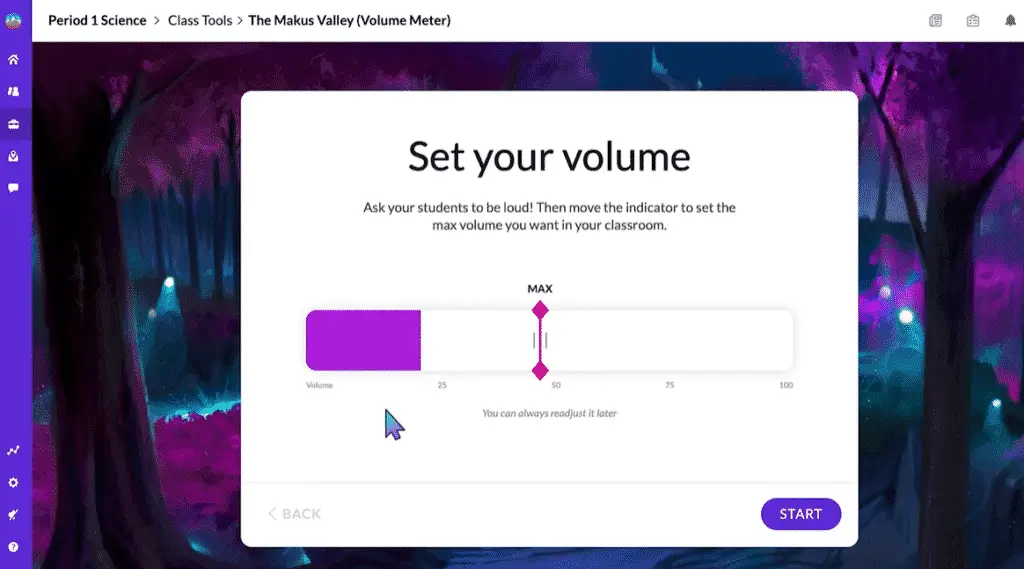
- Class Dojo is another highly-rated noise-monitoring app: Class Dojo is also available in Google Play, with a 4.5 rating. You can also get it at the App Store and Amazon. It has a noise meter feature, which helps visualize noise levels for students. It lets them know how loud they’re being and at what volume they should keep their voices.
Do a Countdown
You can also do a countdown when your students are getting rowdy and noisy. Start counting from 10 or so, and by the time you reach zero, they must be quiet.

Getting them to join is an interactive way to catch their attention – unless it becomes counterproductive and the noise level actually increases.
Try doing the countdown in a different language to spice things up, perhaps for an added challenge.
Have Visual Cues
Set a visual signal with your class to indicate that they’re too noisy and should go quiet.

A simple signal would be to raise your hand and wait for your students to copy. This will help you see which students are paying attention and who are still lost in their world, chattering away with others. You can then gently approach those students and tap them, just as Richard Graham does:
When everyone’s attention has been caught, they can then put down their hands, and you can continue with the lesson.
Another example of visual cues can be in the form of traffic lights or colored buttons. For instance, the red-colored display can indicate that they should keep silent; the yellow can represent a quiet, whisper-like noise level; the green can suggest that they interact at a regular-speaking volume.
Use a Reward and Consequence System
Rewards and incentives are often effective motivators, especially for kids. Aside from rewards, reprimands may also be used to prompt good behavior.
Praise and Reward Students for Being Quiet
Modest praise to commend quiet and behaved students is a way to encourage positive behavior. You can take the time to mention the names of the students who are following classroom expectations. Others will often try to emulate these students to get the same recognition.
Have a points system, where students earn points for specific actions and conduct. My go-to practice for this would be Class Dojo, where students receive – and can lose – dojo points. We agree in class that students who have a certain number of dojo points by the end of the week will be able to enjoy some ‘golden time’ or ‘free time’ on Friday afternoon. You can also have other rewards like candy, stickers, or small prizes in place.
Consequences for Students Not Following Expectations
You can also go the opposite direction. If the students are constantly being noisy – even after numerous warnings – some time can be taken off from their break or recess. Let them know that you’re keeping track of the potential learning time lost due to them being too noisy and that you’ll take the equivalent time off their break. For instance, if they were being noisy for five minutes, that’s five minutes off recess, which many kids would frantically try to avoid.
NOTE – Students, and teachers for that matter, are lawfully entitled to a break, so be mindful about the proportion of time taken off from the students’ recess.
Get Them Moving
Sometimes, kids are noisy because of pent-up energy. Being loud is a way for them to get it out of their system. You can help them by taking a short break and making time for a quick exercise!
Have your students stand up, shake, jump, run in place, or do any other fun and quick exercise they can carry out on the spot. This is a surefire way to entertain them, release that ball of energy inside, and keep them awake and focused for the rest of the class!
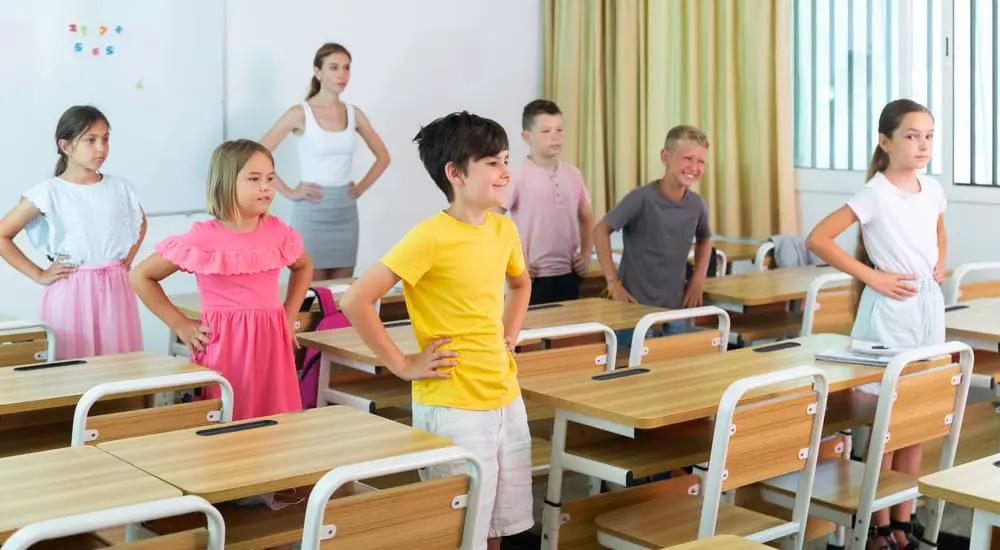
Again, a personal recommendation that makes carrying this out more manageable for us teachers is GoNoodle. With plenty of free dance, meditation, and exercise routines available online, your students will be regularly bugging you about doing a GoNoodle video.
Play a Sound or Music
Playing a sound can act as a great indicator to let your students know that you need them to be quieter. This can be almost any sound – you can bring a simple musical instrument like a triangle that you can strike to chime a note.
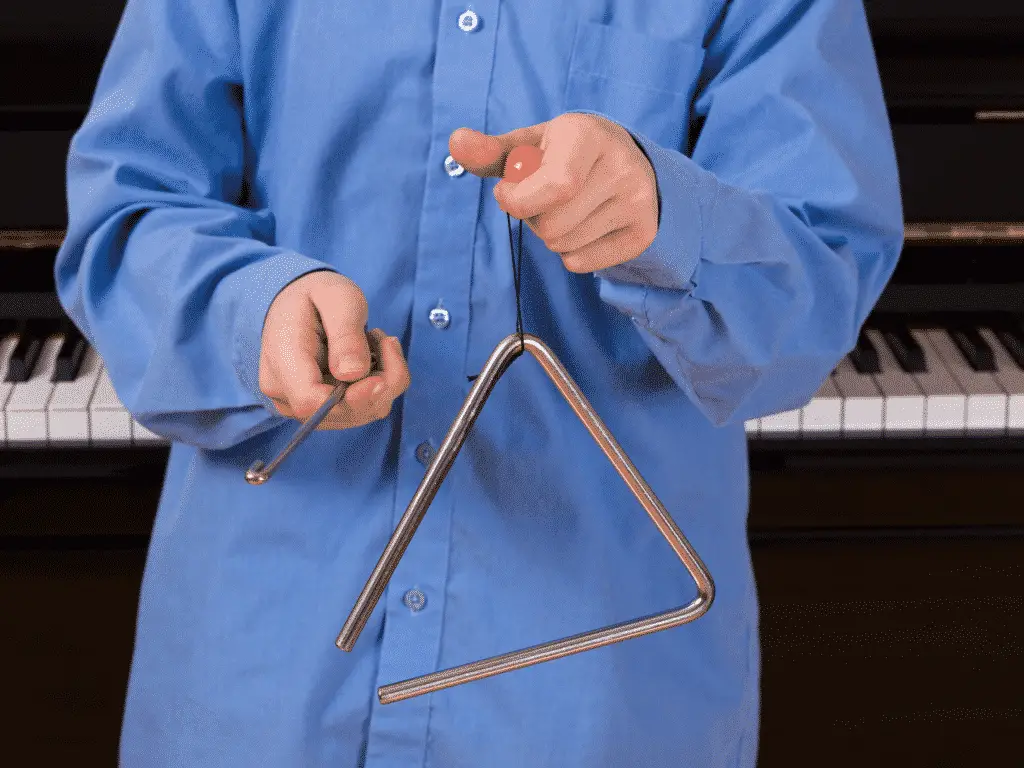
I had once set up a wireless doorbell in my classroom and would choose a student (who was already quiet) to press the doorbell to let the class know that the noise level was too high. Of course, every student wanted to be picked to ring the doorbell so they would show extra effort and awareness in paying attention.
Music can also be used as a preventative measure to halt the noise level rising from the onset. Once I’ve given my students the necessary instructions and set them off on a task, I often like to have relaxing or classical music playing in the background while we work. For us to hear and enjoy the music, the noise level must remain low, which is often the case. Over the years, consequently, my students have become all too familiar with the music of Bizet, Strauss, and Tchaikovsky.
Listen and Talk to Your Students
For your students to listen to you, you would also have to listen to them. A two-way street where you reciprocate the same respect to them helps make your efforts more impactful.
- Have a whole-class discussion: If the noise problem is becoming a more serious issue, consider talking it out with your class. Set a time, sit down, and have an open forum where everyone gets to raise their concerns. They also get to explain themselves and share their issues. After all contributions, you can then discuss solutions, allowing them to have an active role in resolving the problem.

- Have a one-on-one talk with students: Try setting up an individual meeting with your students, especially those who have trouble focusing in your class. Find out what might be causing these issues and try to understand their side. Some kids may act out because of personal matters or particular problems. Knowing the reasons behind them will help you reach a longer-lasting resolution.
When it comes to creating meaningful connections, communication is essential. It allows for the exchange of ideas and teaches your students how to talk, collaborate, and compromise. In short, you shouldn’t be expecting to keep them silent all the time.
Play a Brain Break
Sometimes, children are just noisy because they’re bored. Similar to the advice on getting them moving, brain breaks have been proven to be an excellent way to recoup their focus and attention. They make your class interactive and enjoyable, as well as make the learning process more memorable for them.
Here are some tried and tested Brain Breaks that your students will love:
- 3, 6, 9 – students count to 10 in sequence, but when they get to the numbers 3, 6, and 9, they have to perform an action rather than say the number.
- Silent Ball – students pass a ball around without making a sound. If the ball is dropped or someone speaks, they are out. To make things more interesting, you can introduce challenges like students can only use one hand to catch and throw, hop on one leg while playing, etc.
- Simon Says – a classic game where students have to listen carefully and only perform commands that start with “Simon Says…”.
- Draw over your head – students put a whiteboard on their heads. The teacher mentions an object to draw, and students have to draw it as best they can… with the whiteboard planted on top of their heads.
Likely to be deemed somewhat unorthodox but consider starting the lesson with a brain break. It makes the class and lesson more exciting, but it also helps release pent-up energy right at the start. Therefore, you’ll be much less likely to have jittery kids in class.
Do a Simple Art Activity

There is something about art that comes as therapeutic and calming for most of us. Children are the same. So when asked to draw or paint a picture, they will often give their undivided attention to the task at hand. Not only will this mean a quieter class, but it will also allow your students to practice their creativity.
Painting requires more preparation and can get messier, so I would often stick with a quick drawing and coloring task that would instantly make the classroom a more peaceful environment. All you have to do is supply your students with some paper and pencils and let them express themselves.
Why not present it as a class drawing competition to make things even more exciting? Choose an object or show an image to the class and challenge them to use their best artistic skills to draw what they see.
Turn the Lights Off

Turning the lights off suddenly while your classroom is in a chaos of noise may be the attention-grabber you’re seeking. You don’t have to plunge the room into total darkness or flick the switch on and off again. You can just turn off one set of lights for a few seconds, which is more than enough time to grab their attention before going back to the lesson.
As with the doorbell example, you can always pick a student to do the honors of switching off the lights to inform the rest of the class that it’s far too noisy.
Ask Questions to the Noisy Students
Often, it’s easy to identify the individuals who are causing the most noise and disturbance. You can deal with these students by directing questions their way or simply asking them to summarize and restate the lesson’s key points. This will serve as a warning and break the chatter coming from other sections of the class.
You may also approach these specific students and continue your lesson while simply standing beside them. Your proximity should be enough to keep them from getting too noisy again. I’d also suggest maintaining eye contact to ensure their attention is on you.
Taking a calm and collected approach means that you avoid the potential confrontation with individual students but are still dealing directly with those most responsible for the disruption and disorder.
Conclusion
Sometimes, dealing with a noisy classroom can be frustrating, even for the most experienced teachers. It’s easy to yell and demand that they quieten down; however, doing so isn’t only unproductive, but it also wouldn’t be a good behavior for your students to emulate.
The tips I’ve compiled here are healthier alternatives to losing your cool, but consistency is vital for them to be genuinely effective in practice. For instance, using a signal only once or twice wouldn’t help students remember what it stands for. It might also make them perceive you as too lenient and futile, rendering any subsequent techniques you try to implement as ineffective.
Sources
- The Classroom: How to Deal With Running Behavior Problems at School

- We Are Teachers: Yelling Doesn’t Work With Kids. So What Should You Do Instead?
- Edutopia: 30 Techniques to Quiet a Noisy Class
- The Printable Princess: Classroom Management without Yelling
- ThoughtCo.: Nonverbal Strategies to Quiet Down a Classroom
- Truth for teachers: 15 creative & respectful ways to quiet a class
- Foxwell Forest: 5 Ways to Keep Classroom Control without Yelling
- Theatrefolk: 5 Ways to Quiet Down a Noisy Drama Class (Without Yelling!)
- Teach Thought: How To Get A Noisy Classroom’s Attention
- Stanford University: Dealing with Disruptive Student Behavior
- WikiHow: How to Quiet a Classroom
- YouTube: Genki English: 5 Techniques to get students, kids or adults, quiet (without needing “shhhhh!”)
- Mentimeter: How To Handle Noise In The Classroom
- National Education Association: Controlling Classroom Noise
- Educational App Store: 5 Classroom Noise Monitor Apps for Teachers
- World Bank Blogs: Banning and unbanning phones in schools
- Classcraft
- ClassDojo
- GoNoodle

